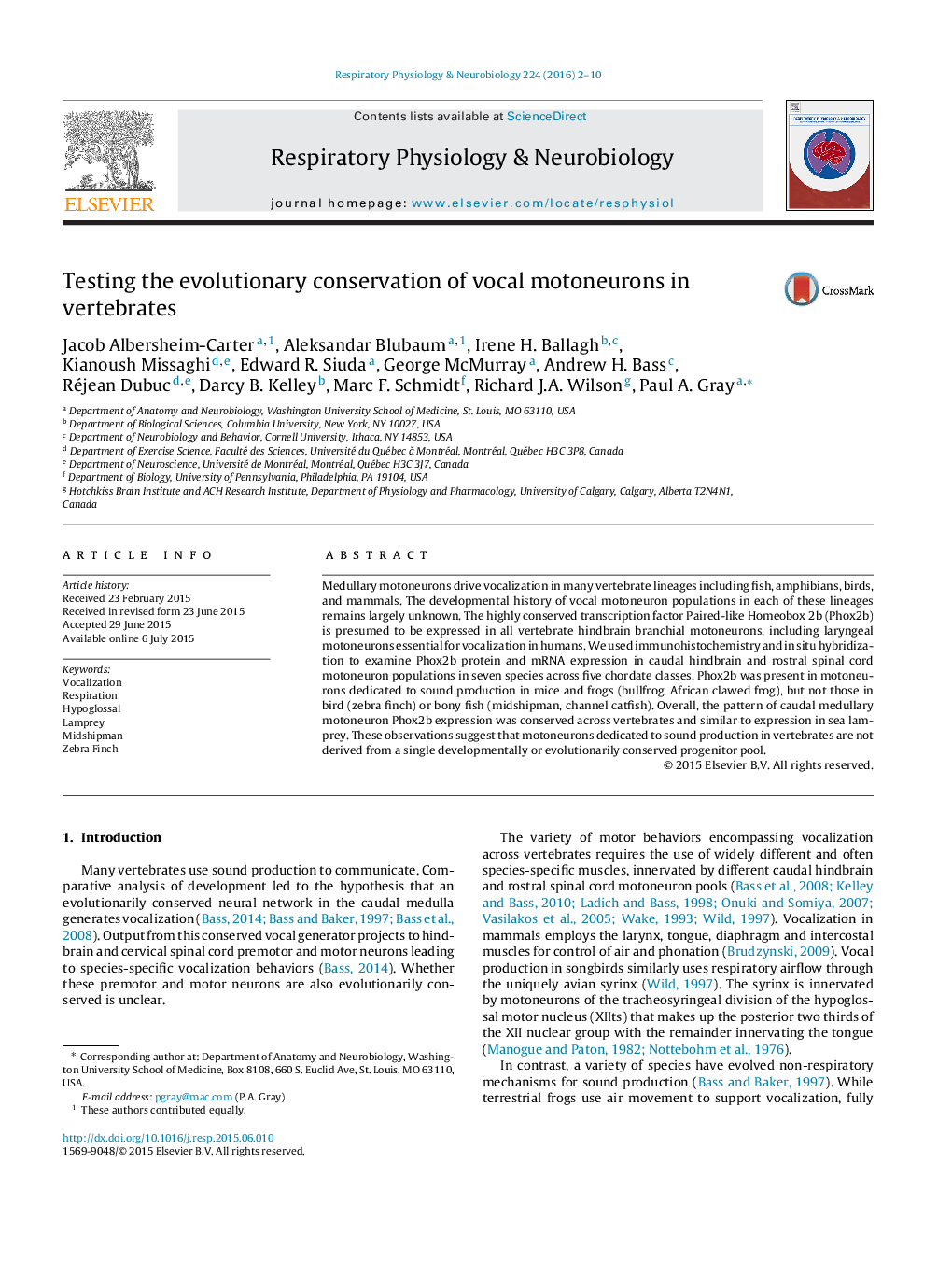| کد مقاله | کد نشریه | سال انتشار | مقاله انگلیسی | نسخه تمام متن |
|---|---|---|---|---|
| 2846765 | 1571306 | 2016 | 9 صفحه PDF | دانلود رایگان |

• Motoneurons important for vocalization in vertebrates are not derived from a single developmental progenitor pool.
• Vocal motoneurons in birds and some teleost fish likely share origins from a single developmental progenitor pool that includes the hypoglossal (XII) motoneurons of tetrapods.
Medullary motoneurons drive vocalization in many vertebrate lineages including fish, amphibians, birds, and mammals. The developmental history of vocal motoneuron populations in each of these lineages remains largely unknown. The highly conserved transcription factor Paired-like Homeobox 2b (Phox2b) is presumed to be expressed in all vertebrate hindbrain branchial motoneurons, including laryngeal motoneurons essential for vocalization in humans. We used immunohistochemistry and in situ hybridization to examine Phox2b protein and mRNA expression in caudal hindbrain and rostral spinal cord motoneuron populations in seven species across five chordate classes. Phox2b was present in motoneurons dedicated to sound production in mice and frogs (bullfrog, African clawed frog), but not those in bird (zebra finch) or bony fish (midshipman, channel catfish). Overall, the pattern of caudal medullary motoneuron Phox2b expression was conserved across vertebrates and similar to expression in sea lamprey. These observations suggest that motoneurons dedicated to sound production in vertebrates are not derived from a single developmentally or evolutionarily conserved progenitor pool.
Journal: Respiratory Physiology & Neurobiology - Volume 224, April 2016, Pages 2–10